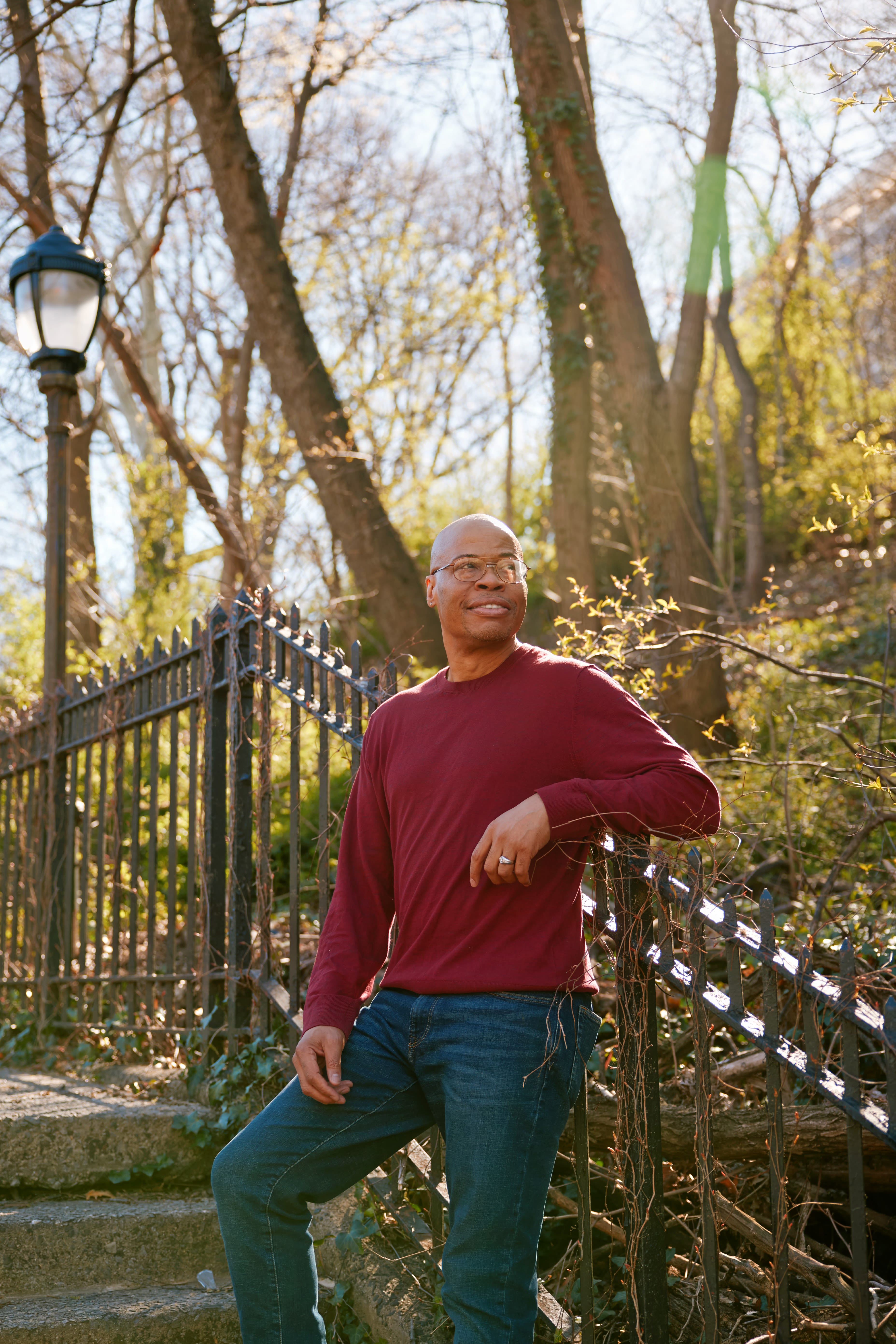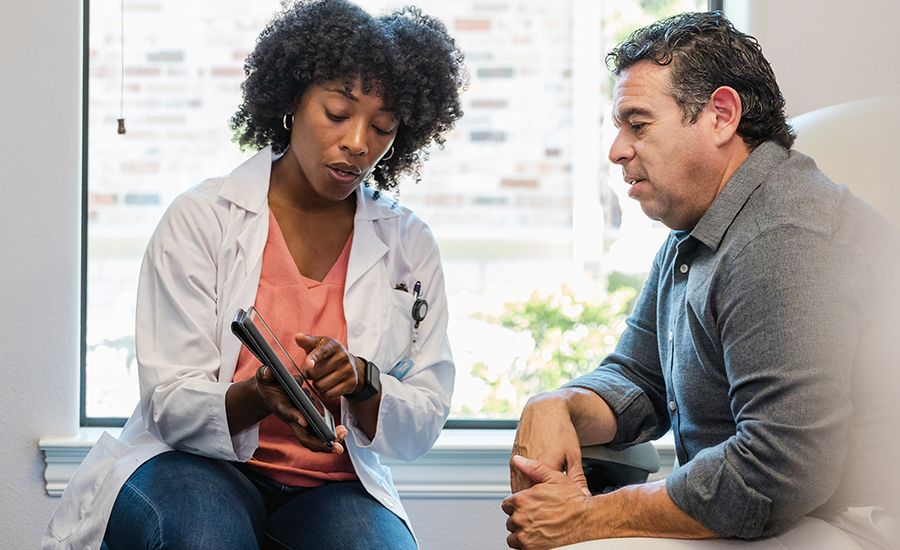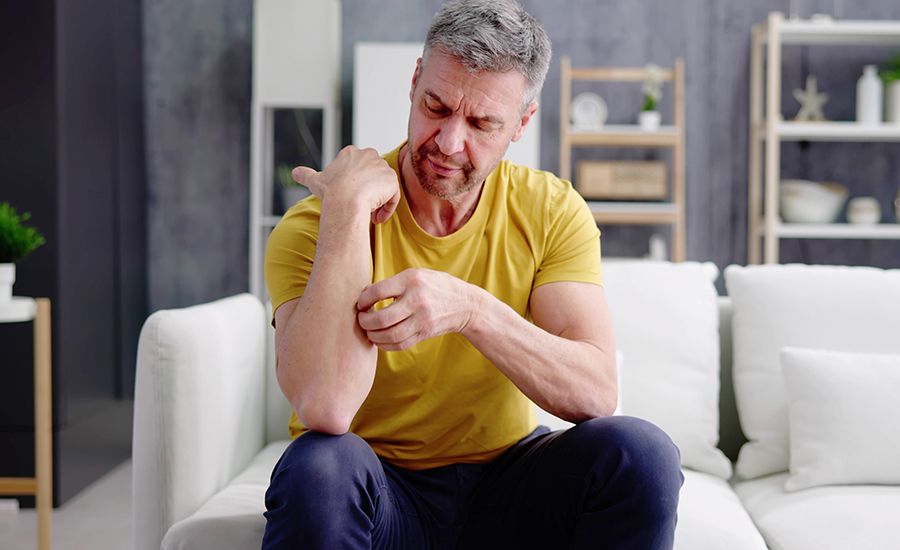Plaque Psoriasis

Paid Advertiser
Paid Advertiser
After struggling with topicals that just didn’t cut it, Rebekah Gouger finally tried a systemic treatment for her plaque psoriasis. Today, her skin is clearing—and she's finally feeling confident in her skin again.
CONTENTS
Health Monitor Living Plaque Psoriasis
Don’t let psoriasis steal your confidence!
With today’s treatment options, you have every reason to believe clear, healthy skin is in your future
How is psoriasis treated?
Learn more about the different options and which one might work best for you.
Photos by okcrowe.com
Photo by xxx
“We feel great in our skin again!”
Rebekah, Blanca and Rudy share the strategies they’ve learned over the years to keep their skin healthy. Ask your care team if they make sense for you, too!
Look your best!
Fashion blogger Helen Hanrahan knows how important it can be to feel confident in your skin—she has psoriasis herself! Here, her skin-friendly tips for looking your best.
Ditch the itch!
Can’t sleep? Trouble concentrating? Feeling down? If you have plaque psoriasis, part of the blame may go to persistent itching, the most bothersome symptom after scaling lesions, according to a survey by the National Psoriasis Foundation. Here, some simple ways to calm your skin.
Test your psoriasis know-how!
Think you have all the facts on this skin condition? Put your knowledge to the test!
Don’t let psoriasis steal your confidence!

Paid Advertiser
Paid Advertiser
With today’s treatment options, you have every reason to believe clear, healthy skin is in your future
You may have been shocked when you first found out you have psoriasis. But as one of up to 8 million Americans living with the condition—the most prevalent autoimmune disease in the United States—you are far from alone. And the first step toward taking charge is learning more about the disease and the many avenues you have to treat it.
So take a moment to read through this guide; even if you’ve been living with psoriasis for years, you may be surprised by what you learn. And if you’ve just been diagnosed, arming yourself with knowledge of the disease can help you and your healthcare team zero in on a treatment plan that can clear your skin—and get you back to living your life with confidence!
What is plaque psoriasis?
Psoriasis is known as an immune-mediated disease—meaning it’s caused when something goes wrong with a person’s immune system. In the case of plaque psoriasis, T-cells, which usually attack germs and foreign invaders, begin to attack healthy skin cells. This triggers the body to start creating new cells at a rapid rate, resulting in itchy and/or painful raised round spots with silvery scales that can sometimes crack and bleed.
Plaques can appear anywhere on the body, but most often show up on the elbows, knees, torso or scalp. Psoriasis can also affect more than just the skin, and is associated with multiple other conditions, including heart disease, obesity, diabetes, inflammatory bowel disease and depression. That’s why it’s key to find a treatment that works!
It’s also important to note that psoriasis is not contagious—you cannot catch it or spread it.
Who is at risk?
While scientists are still not sure what causes the immune malfunction behind psoriasis, it’s believed to be a combination of genetic and environmental factors. If one parent has it, you have a 10% chance of developing it yourself, and a 50% chance if both parents have it.
Some people find their psoriasis first appears after a stressful event, such as a move; after having an infection, such as strep; after a bad sunburn or skin injury; or after taking a certain medication, such as steroids, lithium or a beta blocker.
Plaque psoriasis strikes people of all genders equally, and while it most often shows up in people between the teen years and the mid-30s, it can occur at any age. Smoking also seems to increase a person’s chances of getting it.
How is it diagnosed?
Your healthcare provider may ask you questions about your medical and family history and will perform an examination of your skin. In some cases, they may take a small skin biopsy to confirm the diagnosis or rule out other conditions.
Once plaque psoriasis is confirmed, they will rank the severity, either by how much of your body is covered (less than 3% = mild; from 3% to 10% = moderate; more than 10% = severe) or via the Psoriasis Area and Severity Index (PASI) on a scale from 0 to 72, where a score higher than 10 suggests severe.
What this means for you
Regardless of whether you’ve just been diagnosed or have been living with psoriasis for a while, there’s every reason to believe you can find a treatment that works for you. Continue here to learn about the different options and remember—you’re a key member of your healthcare team. By staying up-to-date on the latest options, taking your medication as prescribed (and giving them time to work) and being open and honest with your doctor, you’ll be living with clearer, more comfortable skin in no time!
How is psoriasis treated?

Paid Advertiser
Paid Advertiser
When reviewing your treatment options, your doctor will ask about your health history, changes in your current health status as well as how you feel about your psoriasis and what you’re willing to try to achieve clear skin. Your plan of attack may include any of the following methods:
Applying topical treatments. These medications, available as creams and ointments, both over-the-counter and by prescription, help reduce inflammation, itching and scaling. Examples include anthralin, calcipotriene, calcitriol, coal tar, corticosteroid, retinoid and salicylic acid. You may try topical treatments if you’ve just been diagnosed or if patches are small.
Exposing your skin to light. Your dermatologist may suggest phototherapy—the use of ultraviolet light to treat your skin. This therapy helps to clear up plaques and reduce inflammation. Getting a phototherapy treatment involves exposing your skin to a lamp in your doctor’s office or to a prescription home phototherapy unit. Lamps range in size from a handheld wand to a full-body bed or booth. Light treatments typically happen a few times a week for a month or longer. Examples include ultraviolet B (UVB), psoralen + ultraviolet A (PUVA) and excimer laser. Phototherapy can also be used with medications. Note that tanning beds should not be used as a substitute for phototherapy.
Exploring body-wide (systemic) medication options. These medications slow skin cell growth and reduce inflammation. Examples include cyclosporine, methotrexate and drugs that block aspects of the immune system associated with psoriasis, such as biologics and PDE4-inhibitors. Immunotherapies are some of the newest treatments to target psoriasis.
What you can do
In addition to medication, you can also help lessen the symptoms of psoriasis by keeping skin moisturized; avoiding itchy or tight clothing; reducing stress; and maintaining a healthy weight (learn more about how to reduce the itch and discomfort of psoriasis at home, here).
And remember: How you feel about your psoriasis is unique to you. For some, large patches may not be a problem, while others may feel embarrassed about just a few small ones. No matter how you feel, it’s important to be open and honest with your healthcare provider. If your plaques are bothering you or embarrassment over your psoriasis is causing you to limit your activities, speak up!
Looking for a more low-maintenance treatment?
Does your current treatment require messy creams, weekly injections or frequent blood tests? Struggling with side effects? Speak up! By letting your healthcare provider know, you can work together to find a treatment option that works for you, your body and your lifestyle!
“We feel great
in our skin again!”
Rebekah, Blanca and Rudy share the strategies they’ve learned over the years to keep their skin healthy. Ask your care team if they make sense for you, too!

Paid Advertiser
Paid Advertiser
“I’m living my best life again!”
____________________
REBEKAH GOUGER
These days, Rebekah Gouger is keeping her eyes focused on the future. The 29-year-old happily married Chattanooga, TN, resident is building a future in community-based grant development. “I’ve found a real passion in this career. I love being involved in my community—it gives me a sense of purpose!”
When she’s not busy with that, Rebekah travels with her husband, Dakota, and goes on thrifting adventures, which she shares on her TikTok account @bekahthrifts.
But life wasn’t always this carefree for Rebekah—just a handful of years ago she felt overwhelmed by plaque psoriasis.
“Am I really going back to the dermatologist?”
Rebekah’s journey with psoriasis began in her early 20s, and at first was entirely manageable.
“I initially found a quarter-sized patch of irritation on my forearm, but it was winter so I assumed it was just because my skin was dry. When warm weather came it went away, confirming my beliefs, but I didn’t realize at the time that was probably due to the sun exposure.”
When the patch came back two winters in a row—each time growing in size and irritation—Rebekah mentioned it to her primary care doctor, who thought it might be a fungal infection and prescribed topical creams that didn’t work.
Rebekah was no stranger to dermatologists, having undergone multiple rounds of acne treatments in her teens, so when the creams weren’t working, she figured it was time to see a skin specialist again.
“It was beyond frustrating—all I could think was I’m in my 20s—am I really going back to the dermatologist?” Still, even meeting with specialists didn’t help initially: They either misdiagnosed the condition or prescribed only topical creams or lifestyle changes that had no effect. “I completely changed my diet to try and avoid ‘trigger foods,’ but nothing worked.”

Photos by okcrowe.com
Photos by okcrowe.com
“It was the sickest I’ve ever been in my life”
In 2020 Rebekah faced a double challenge when she contracted COVID-19. The virus hit her hard, leading to severe illness that pushed her immune system to its limits.
“It was the sickest I’ve ever been in my life—I couldn’t even get out of bed.” Following that, Rebekah’s psoriasis worsened.
So Rebekah saw a new dermatologist. Seeing how years of topicals really hadn't been cutting it, she suggested a systemic treatment for plaque psoriasis, an oral medication that blocks an enzyme central to the inflammatory process. It was a more comprehensive treatment plan than anyone had recommended to her before, and she immediately agreed.
“I feel like my body is mine again!”
“Within three days of taking my first pill, I stopped wanting to crawl out of my skin,” she says. “The plaques elsewhere were clearing up. I had a bit of nausea at first, which my doctor said was normal, and luckily that side effect did subside.”
Today, three years later, Rebekah is still taking the medication and credits it for changing her life. “For such a long time I didn’t feel good in my skin—finding a medication that made me feel whole was the ultimate blessing,” Rebekah says. “I’m so grateful to my doctor—I feel like my body is mine again!”

Photos by okcrowe.com
Photos by okcrowe.com
Rebekah’s go-to tactics for calming the skin
Here, Rebekah shares her strategies for calming her skin—ask your healthcare provider if they could work for you, too.
Eliminate stress. Research shows stress can trigger psoriasis flare-ups and worsen existing flares. “It’s definitely a big trigger for me personally. So now I work intentional stress-reducing activities into my day—I make time to have a quiet cup of tea in the morning, I go for regular afternoon walks, and I practice deep breathing exercises.”
Find the right products. “I have a few skincare favorites that don’t irritate my skin further or cause flare-ups, including Cetaphil Very Dry to Dry Skin moisturizing cream and Good Fortune eczema-specific body oil, which you can find here. You have to find what works for you, but generally you’ll want to find products like these specifically made for sensitive skin conditions.”
Try this therapy. Red light, which is an emerging treatment for plaque psoriasis. Research posted in Lasers in Medical Science found that people with plaque psoriasis were able to clear 60 to 80 percent of their skin with two red light therapy sessions a week. “I tried it and it gave me excellent results, I’d suggest it to anyone who struggles with severe plaques,” notes Rebekah. “Paired with my medication it’s been a lifesaver.”
Check out the sauna. “Since my skin is definitely worse in the dry, cold winter weather, I make a point of visiting a sauna when I can. For some people I think sweat might be an issue, but for me the damp, warm steam is incredibly therapeutic."
Keep hydrated. Moisturization doesn’t just start with the skin, drinking enough water is also important. “I’m constantly drinking water these days, and I feel an immense difference in my skin when I’m not properly hydrated. If you have trouble drinking water, there are apps and special water bottles you can buy to help remind you, or you can try flavored water, seltzers—whatever it takes!”
Stay connected. “Sometimes the best medicine is to just not feel alone,” admits Rebekah. “Whether that’s via an online group, friends and family, or even your heroes. Someone I’d love for everyone to check out is Whitney Simmons, she’s played a huge role in my accepting myself and realizing that just because I have plaques doesn’t mean I’m not beautiful.” You can find Whitney on Instagram @whitneyysimmons.
“Be patient with the process”
____________________
BLANCA JUAREZ
Blanca has been living with psoriasis since her early 20s, and still battles occasional flares, citing stress as her biggest trigger. She counters it with a daily routine that helps her stay in the moment and put things in perspective. “While my flares may be unexpected, following my routine every day reminds me that there’s something within my control,” she explains. “So every morning, I drink a cup of chamomile tea before my shower. After eating breakfast and doing my chores, I work out or do some type of exercise. Then I start my workday,” she says. “My workday is the most stressful time of my day, so I like to enjoy a nice walk or jog after work to relax my brain. I always end my evening with a nice relaxing dead sea salt and lavender bath to soothe my skin.” Here she shares the other tips that help keep her skin calm and healthy.
Take your time.
“I met my husband when my psoriasis was only on my scalp and that was easy to cover up, so at first I didn’t even tell him about it. When we got married, it hit me hard with all the stress from planning the wedding, and I got a bad flare on my back. At that point he knew about the psoriasis, even though I would try to hide it, but I slowly started to explain it to him more. Now I am open to changing and dressing in front of him. If you don’t feel comfortable showing your psoriasis to your significant other at first, it’s okay! Don’t show them, just mention it. Eventually you will feel comfortable to show them without thinking about it. It definitely won’t happen overnight but be patient with your partner because they, too, might feel like something is up if you hide it completely, so talking about it also helps the other person to better understand you.”
Lean on your support group.
“My biggest supporter is my husband. He is always willing to help me when I need it. He pushes me to do better and encourages me when he sees that I am doubting myself, for example, when I’m running and I want to give up. I always thought I was tough and didn’t care what others thought of me, and he has done a great job of reminding me just that—not to let other people’s opinions affect my life. He encourages me to be my true self every day and always reminds me how beautiful I am inside and out.”
Find the silver lining.
“I used to be the girl who was horrible at sports and would always choose the worst of meals like pizza and chips; plus, I would hardly ever eat breakfast. If it wasn’t for my psoriasis, I would still be down that same unhealthy path. For the sake of my overall well-being, that girl has been left in the past and I am a totally different person now. I am still not the best at sports, but today I can say with confidence that I can do a sit up! I enjoy running and working out and I now eat breakfast and make healthier meal choices. Psoriasis has brought out a side of me that I never thought I had.”

Photo by Craig Kohlruss
Photo by Craig Kohlruss

Photo by Craig Kohlruss
Photo by Craig Kohlruss

Photo by Craig Kohlruss
Photo by Craig Kohlruss

Photo by Matt McGinley
Photo by Matt McGinley
“Don’t self-diagnose!”
____________________
RUDY MILES
Rudy Miles knows skincare. As a professionally licensed New York esthetician, makeup artist and the owner of Beauty by Rudy, he analyzes skin and matches his clients’ issues with the right products daily. “I was trained to ‘say what you see’ when working with clients. It’s important to address those issues with skincare, whether it be dryness, scaliness or acne, so the makeup works better,” explains Rudy.
So when he first noticed discoloration and dryness on his scalp, he immediately thought it was hyperpigmentation.
“I said, let me put some vitamin C and retinol on it, and I’ll use glycolic acid to help it fade. But none of those products worked. Since I’m bald, I’m always using the same products on my scalp that I use on my face. And my face was even, so I could not figure out why my scalp wasn’t. Still, I kept struggling to fix the issue on my own anyway.”
Rudy continued trying different products “for far too long,” before admitting nothing he was trying was working, and finally made an appointment with a dermatologist.
“He diagnosed me with scalp psoriasis. I was floored! But once I started on the treatments he prescribed, I actually started seeing improvement. By self-diagnosing the problem, I had just been making it worse!”
Here, Rudy shares the other tips he’s learned living with plaque psoriasis:
Be open to different treatments.
Rudy first started using prescription topical steroid creams and solutions. They did help, but the spots weren’t entirely gone. He saw an advertisement on social media for prescription light therapy. “I called my insurance, got approved and started going to treatments twice a week. It was a process. I got a small burn initially, so we had to change the intensity. Finding the perfect threshold took trial and error, but I finally noticed all the spots were gone one day! These days, I still apply a topical once a week to keep my scalp flare-free going forward.”
Make connections.
Once Rudy learned his diagnosis, he started researching his condition. That’s when he found the psoriasis group on Twill, a social support group app (download it at twill.health/twill-care) that features groups for multiple different medical conditions, including psoriasis. “I love the community! It’s great to have other people to talk to. Having something so visible can affect your self-confidence.”
Reach out.
Rudy uses his professional social media platforms to discuss tips and tricks on managing psoriasis. “Last week, a friend called me, and I could hear the distress in his voice. He was having some skin issues and wanted advice. I told him to see a dermatologist to get a correct diagnosis. I said, ‘Even if it’s psoriasis, you’ll be okay—there are treatments that work!’ ”

Photo by Matt McGinley
Photo by Matt McGinley
Look your best!
Ready to give your wardrobe a makeover but don’t want to risk aggravating your skin? Follow these tips from fashion blogger and psoriasis sufferer Helen Hanrahan (theflakyfashionista.blogspot.com) and step out with confidence!

Distract the eye. It’s all in the accessories! When dressing, select items that draw the eye to the area(s) you most want to show off. A fabulous statement necklace, a chunky cocktail ring, a large man’s watch or a stunning cuff bracelet will take attention away from your skin. Just wait for the compliments!

Time to sparkle. For parties, invest in sequin tops or dresses. The good news is that flakes simply slide off sequins, so you can sparkle without worry. Pair a sequin dress with opaque tights and shoe boots. Wear a sequin top with skinny trousers and style the ensemble with a bright-colored clutch and heels.

Follow these trends. Pale pink and tartan! The reason? Pink ensures scalp flakes aren’t visible. And tartan acts as a perfect camouflage—just make sure it contains an element of white.

Discover your new black! If scalp psoriasis is a problem, make gray, taupe or cream your new basic color. Unlike black, these colors will conceal any flaking and let you stand out in a sea of darker fabrics during the winter months.
IMPORTANT!
Don’t be tempted to buy knitwear online. Yarns that suit some people may irritate others, so make sure you try it on before you buy.

Paid Advertiser
Paid Advertiser
Ditch the itch!

Paid Advertiser
Paid Advertiser
Can’t sleep? Trouble concentrating? Feeling down? If you have plaque psoriasis, part of the blame may go to persistent itching, the most bothersome symptom after scaling lesions, according to a survey by the National Psoriasis Foundation. Luckily there are ways to calm your skin. We spoke to dermatologist Karan Lal, DO, MS, FAAD, to get his most recommended everyday strategies—ask your healthcare provider if they could work for you, too!
Powerful prevention
Stop symptoms before they start

Take short, warm showers. While bathing can soften plaques and hydrate skin, hot water saps moisture. So stick to water as cool as you can stand and limit showers to between 5 and 10 minutes. And swap bar soap, which can be drying, for a body wash that contains moisturizing ingredients like glycerin, shea butter and oils.

Moisturize at the right time. That’s immediately after you’ve showered and gently patted yourself dry, when skin is still slightly damp. Pick a thick, heavy lotion—it will adhere better and lock in moisture to help keep skin hydrated. “Concentrate on problem areas first, like knees and elbows, to get them hydrated quickly,” suggests Dr. Lal.
Note: Applying moisturizer against the direction of hair growth can actually irritate the skin. So always smooth on lotions and ointments in the direction of hairs!

Lay it on thicker at night. Ointments are best for moisturizing skin and preventing itchiness, but they can be messy to apply during the day. Instead, reserve them for overnight treatments—your skin will have a chance to soak up moisture while you sleep, and you’ll be less likely to scratch in the middle of the night.
Tip: Try one designed to prevent diaper rash, which will be gentler on sensitive skin!
Flare fixers
Help soothe active plaques

Apply hydrocortisone cream. This anti-inflammatory cream is also available over the counter, and just a dab smoothed over especially itchy areas can bring relief for some.

Ice it out. When you feel the itch coming on, grab a cool compress from the freezer. The cold shocks your nerves and can delay the itch signals from reaching your brain.

Keep aloe vera on your windowsill. The gel derived from this succulent doesn’t just help sunburns—it can moisturize plaques and naturally soothe itch, too. If you have a plant handy, simply break off a stalk and rub the sap directly on your skin, or you can buy an aloe-based gel from the drugstore.
Take note of your mental health, too
Stress can actually make itching worse, according to preliminary research in the American Journal of Pathology. So do whatever you can to relax, whether it’s meditation, yoga, reading a good book or going for a walk when your skin is itchy. “I recommend to my patients to make sure they seek outlets for their anxiety, too—not just to soothe itching, but because mental health is extremely important for patients managing chronic diseases,” says Dr. Lal.

Paid Advertiser
Paid Advertiser
Quiz

Paid Advertiser
Paid Advertiser
Special thanks to our medical reviewer:
Mark G. Lebwohl, MD, Dean for Clinical Therapeutics, professor and chairman emeritus at Kimberly and Eric J. Waldman Department of Dermatology, Icahn School of Medicine at Mount Sinai, New York
Maria Lissandrello, Senior Vice President, Editor-In-Chief; Lori Murray, Associate Vice President, Executive Editor; Lindsay Bosslett, Associate Vice President, Managing Editor; Joana Mangune, Senior Editor; Erica Kerber, Vice President, Creative Director; Jennifer Webber, Associate Vice President, Associate Creative Director; Ashley Pinck, Associate Art Director; Sarah Hartstein, Graphic Designer; Rachel Pres, Senior Director, Digital Production
Dawn Vezirian, Vice President, Financial Planning and Analysis; Tricia Tuozzo, Sales Account Manager; Augie Caruso, Executive Vice President, Sales & Key Accounts; Keith Sedlak, Executive Vice President, Chief Growth Officer; Howard Halligan, President, Chief Operating Officer; David M. Paragamian, Chief Executive Officer
Health Monitor Network is the nation’s leading multimedia patient-education company, with websites and publications such as Health Monitor®.
For more information: Health Monitor Network, 11 Philips Parkway, Montvale, NJ 07645; 201-391-1911; healthmonitornetwork.com ©2024 Data Centrum Communications, Inc. Questions? Contact us at customerservice@healthmonitor.com
This publication is not intended to provide advice on personal matters, or to substitute for consultation with a physician.
RPA24-DG-PSO-1ETO
Health Monitor Medical Advisory Board
Michael J. Blaha, MD, Director of Clinical Research, Ciccarone Center for the Prevention of Cardiovascular Disease; Professor of Medicine; Johns Hopkins
Leslie S. Eldeiry, MD, FACE, Clinical Assistant Professor, Part-time, Department of Medicine, Harvard Medical School; Department of Endocrinology, Harvard Vanguard Medical Associates/Atrius Health, Boston, MA; Chair, Diversity, Equity and Inclusion Committee, and Board Member, American Association of Clinical Endocrinology
Marc B. Garnick, MD, Gorman Brothers Professor of Medicine at Harvard Medical School; Director of Cancer Network Development, Beth Israel Deaconess Medical Center; Editor-in-chief of Harvard Medical School’s Annual Report on Prostate Diseases
Angela Golden, DNP, FAAN, Family Nurse Practitoner, former president of the American Association of Nurse Practitioners (AANP)
Mark W. Green, MD, FAAN, Emeritus Director of the Center for Headache and Pain Medicine and Professor of Neurology, Anesthesiology, and Rehabilitation at the Icahn School of Medicine at Mount Sinai
Mark G. Lebwohl, MD, Dean for Clinical Therapeutics, professor and chairman emeritus at Kimberly and Eric J. Waldman Department of Dermatology, Icahn School of Medicine at Mount Sinai, New York
Maryam Lustberg, MD, Associate Professor of Internal Medicine (Medical Oncology); Director, Center for Breast Cancer; Chief, Breast Medical Oncology; Yale School of Medicine
William A. McCann, MD, MBA, Chief Medical Officer; Allergy Partners, Asheville, NC
Mary Jane Minkin, MD, FACOG, Clinical professor in the Department of Obstetrics, Gynecology, and Reproductive Sciences at the Yale University School of Medicine
Rachel Pessah-Pollack, MD, FACE, Clinical Associate Professor, Division of Endocrinology, Diabetes & Metabolism, NYU School of Medicine, NYU Langone Health
Julius M. Wilder, MD, PhD, Assistant Professor of Medicine; Chair, Duke Dept of Medicine Diversity, Equity, Inclusion, and Anti-racism Committee; Vice Chair, Duke Dept of Medicine Minority Retention and Recruitment Committee; Co-Director for the Duke CTSI - Community Engaged Research Initiative





